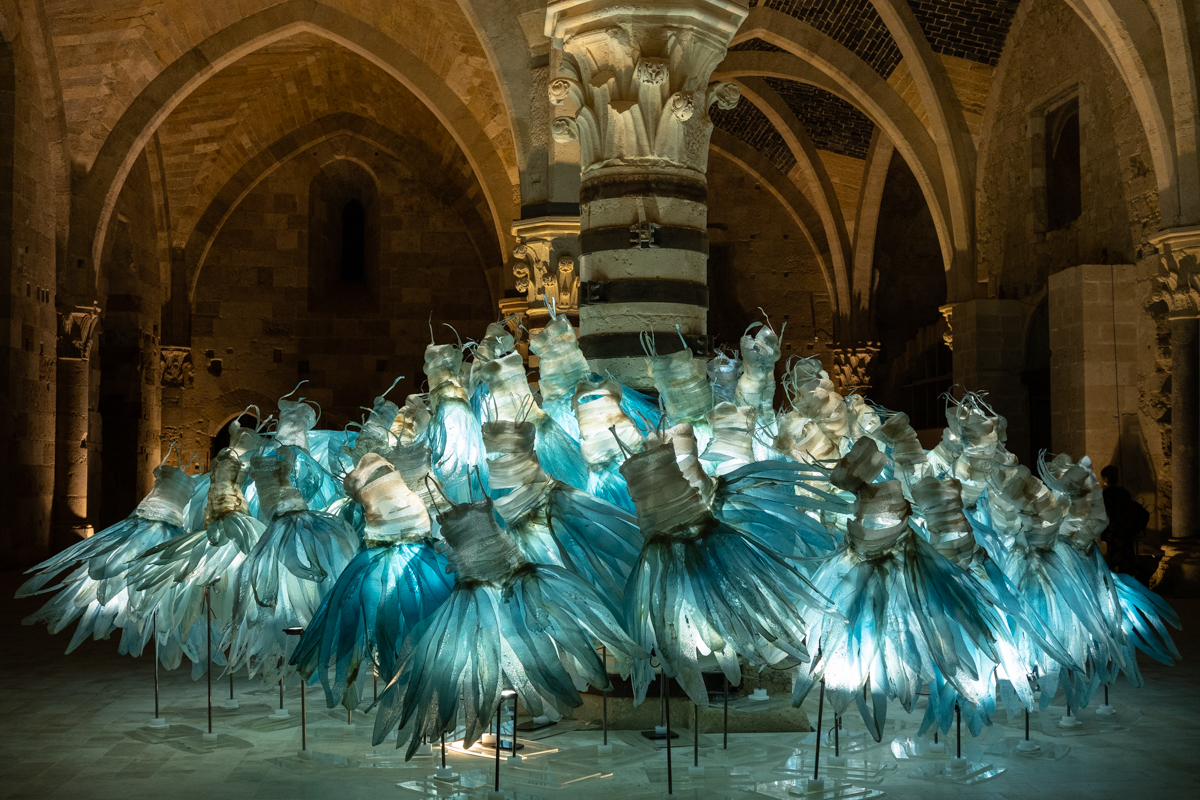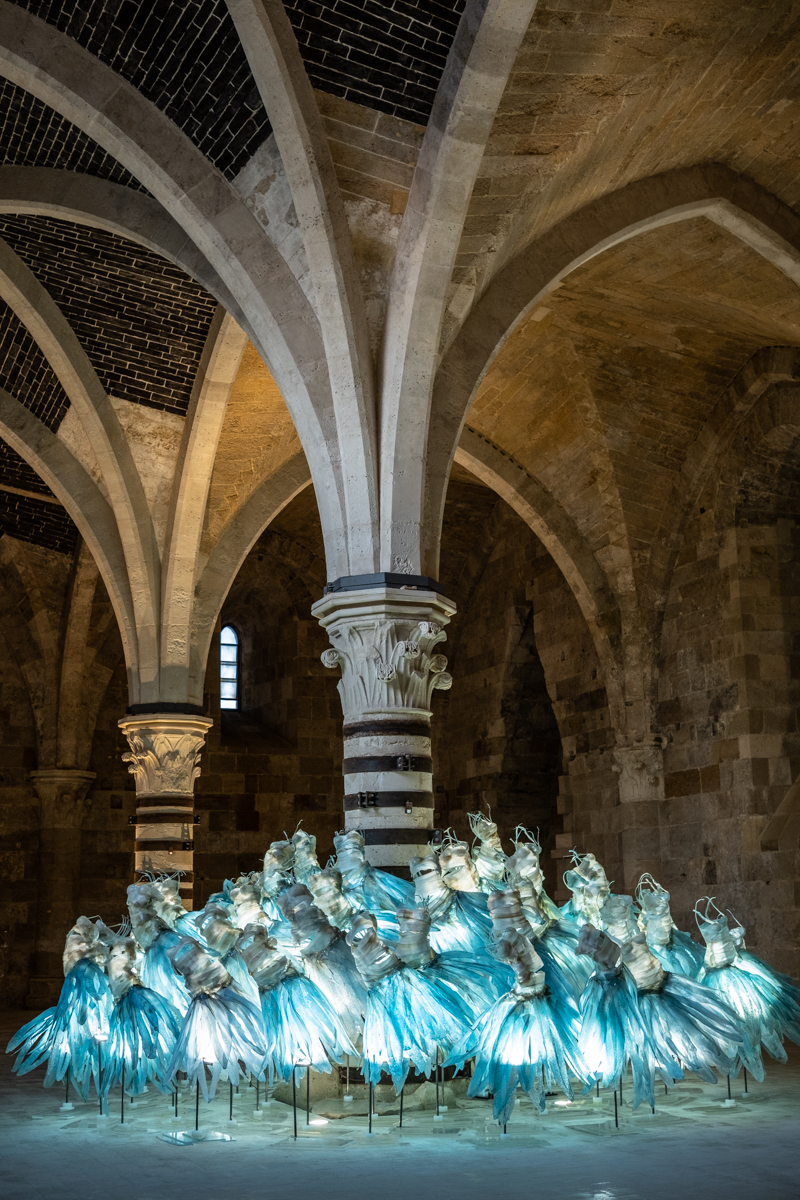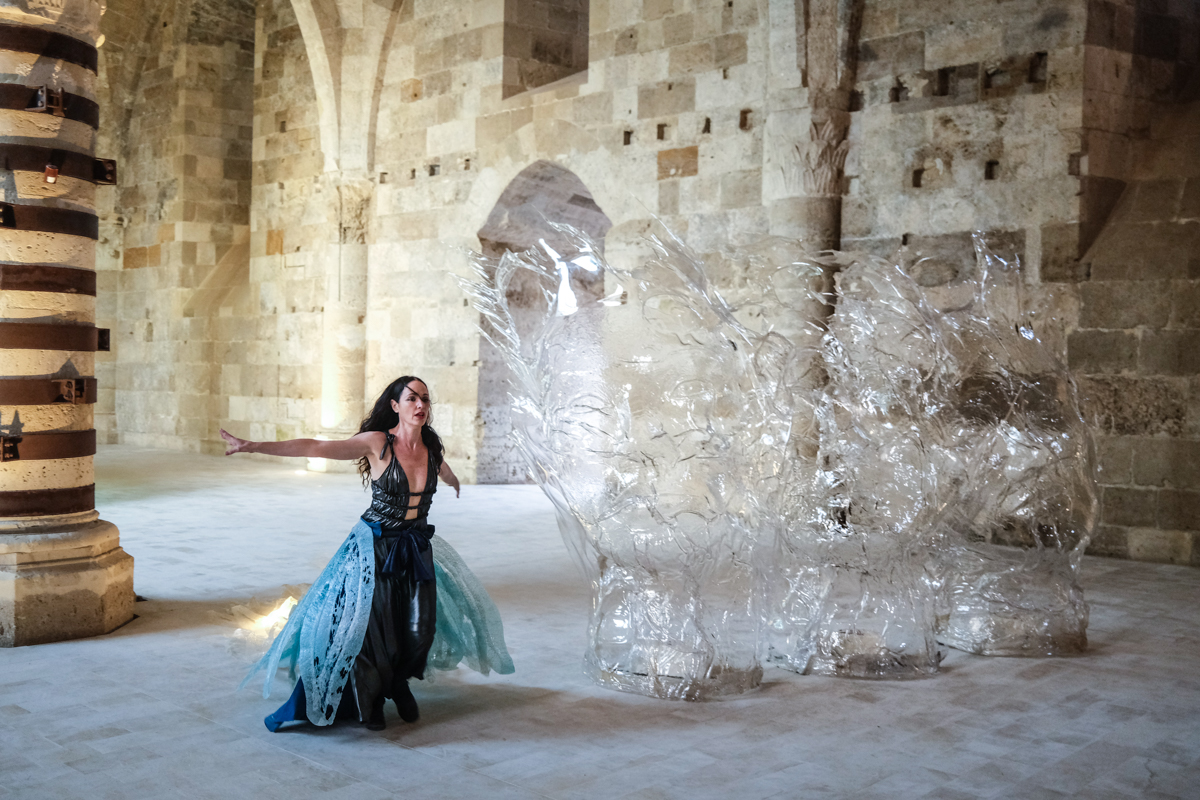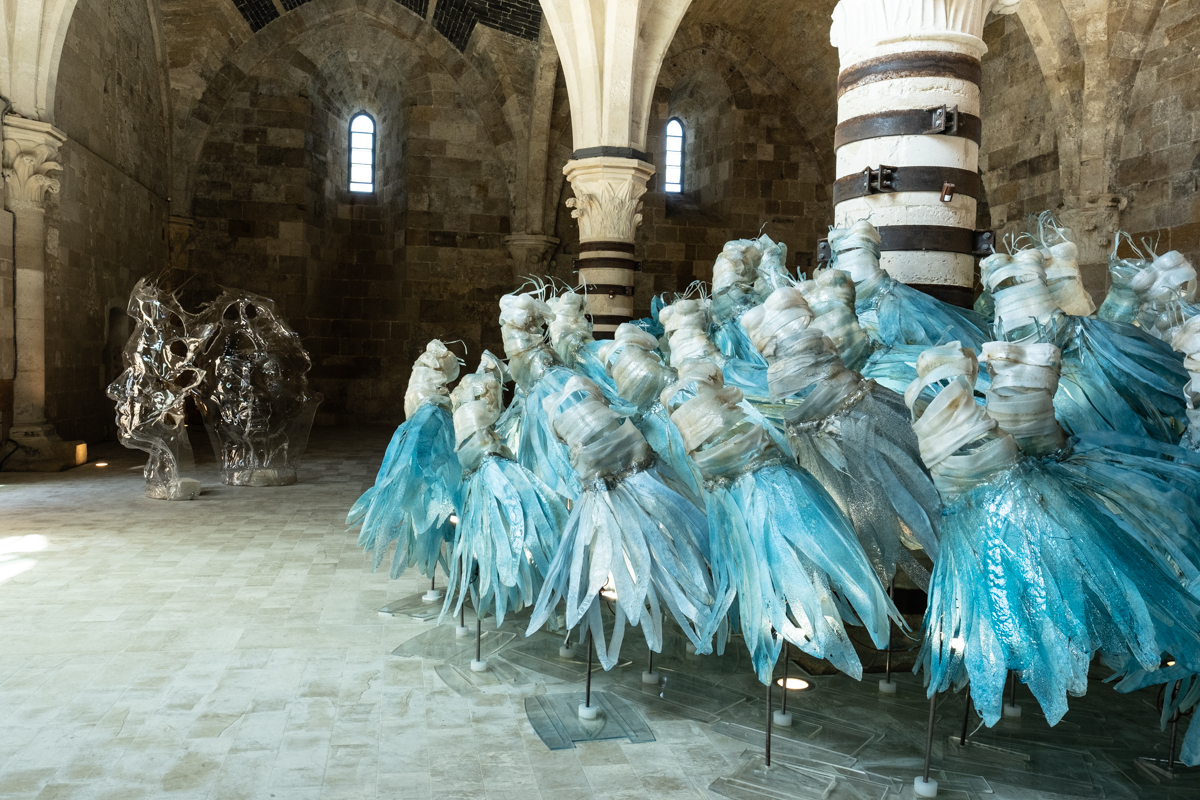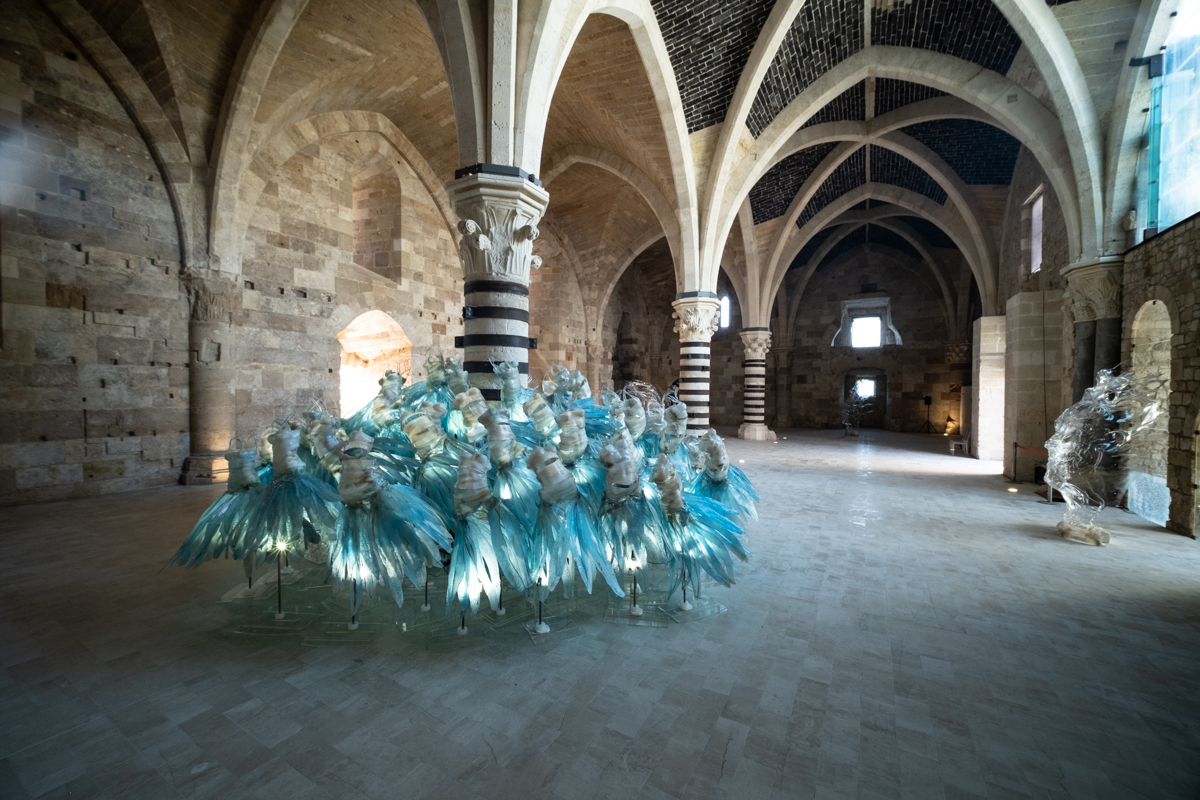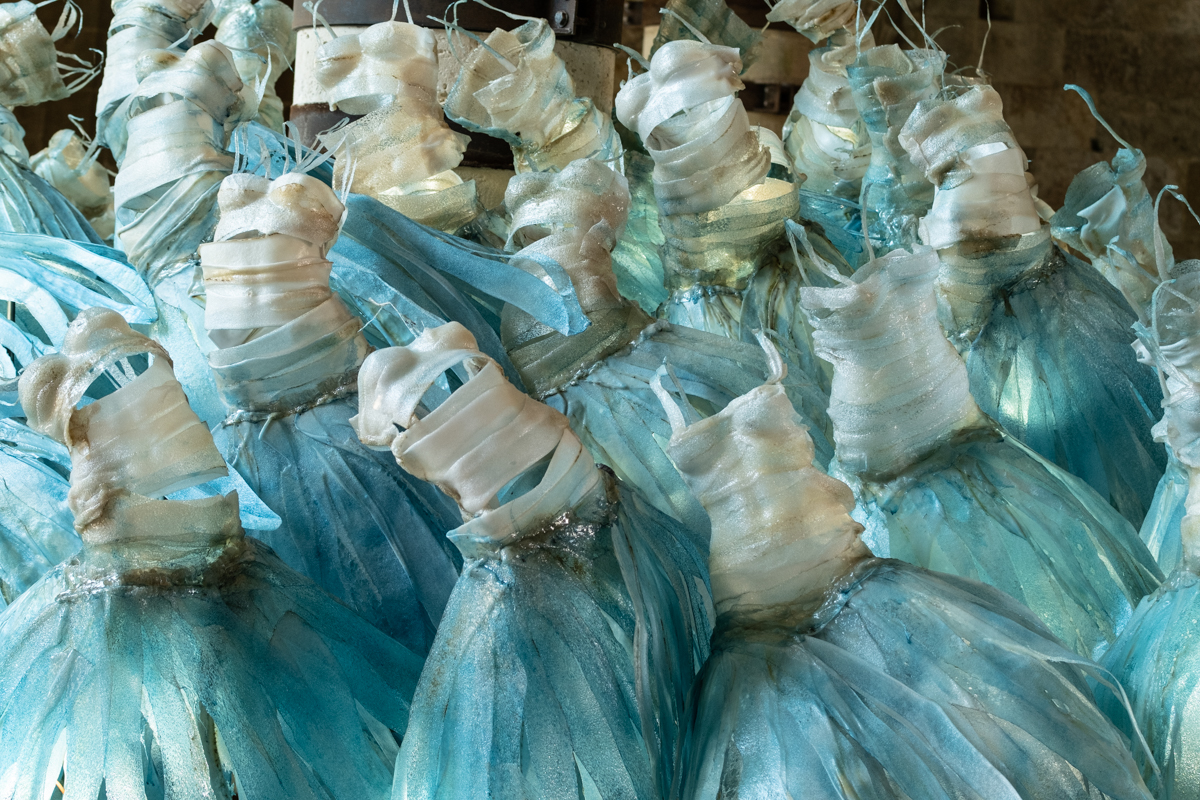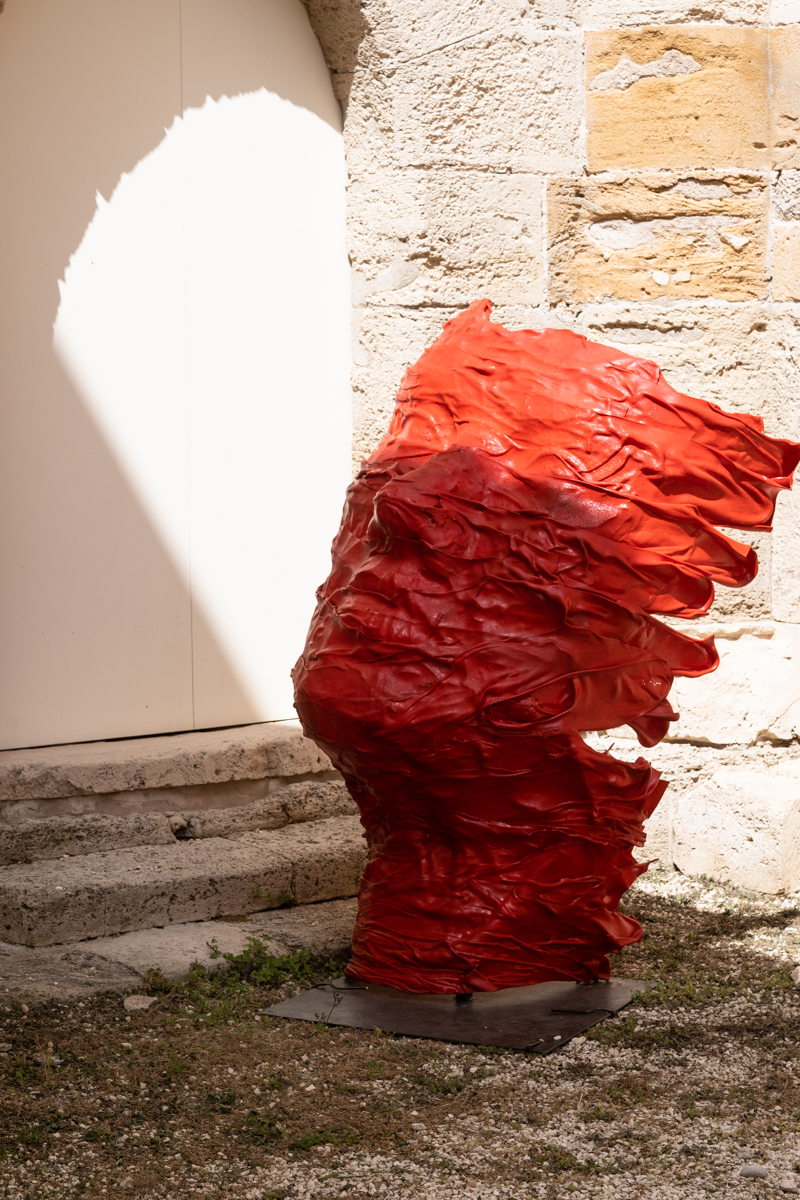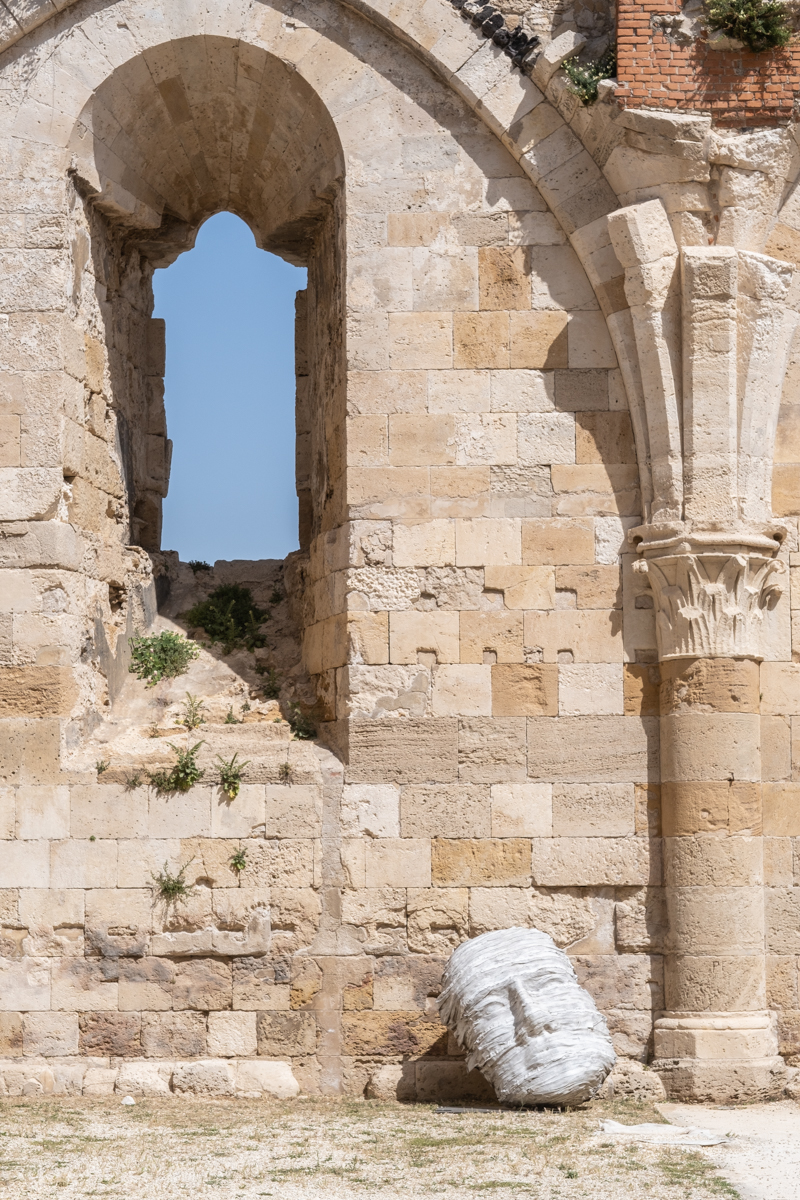3 june 2022 | Castello Maniace, Syracuse (Sicily)
4 June – 31 December 2022
Solo exhibition by Davide Dall’Osso “In un mondo perfetto”, curated by Elena Violetti and Maria Vittoria Gozio in the exhibition spaces of the Maniace Castle in Ortigia, Syracuse (Sicily).
The artist Davide Dall’Osso has created an installation of more than 70 sculptures through which he wants to talk about the possibility of a world in which gender equality is implemented.
Entering the Hypostyle Hall we hear women’s voices resounding. They are the voices of the sculptural wave, a light but unstoppable feminine wave. It is Arethusa who welcomes Desdemona, Griselda and all the other female figures of literature who, having ‘experienced’ gender violence, from their brutal experience offer us a possibility of change that can lead through ‘truth to love’ or to gender equality in a “perfect” world.
This sculptural wave (like almost all of the works created by Davide Dall’Osso) is made entirely with waste of an industrially recovered plastic polymer, polycarbonate. The figurative sculptor Dall’Osso has been working on these materials for 25 years for a green and circular economy idea.
For Davide Dall’Osso each installation is a dramaturgy that tells of our contemporary split between the dreamlike and the material, which takes shape in the space and emotions of each of us. The artist comes from the theatre: the emotional tension that erupts from each of his works transforms the space into an existential proscenium. The meeting with the opera director Rosetta Cucchi two years ago led the artist to collaborate on the scenography of the Opera ” Griselda” by Scarlatti where we talk about gender violence and this year in Rossini’s opera “Otello”, again directed by him, where we talk about femicide. The opportunity for comparison with the figures of Griselda and Desdemona laid the roots of this installation. Arethusa represents the trait d’union to be able to talk about emancipation from gender violence through a sculptural installation.
A wave of female figures, like classical dancers, bursts into the Hypostyle hall. Dall’Osso chose the sculptural representation of the tutu because, in the collective imagination, this dress embodies lightness and determination, the body and technique, art and narration and reinforces, in the installation of the wave, the idea that it was born not from a momentary impulse but from the strength of a meditated life experience.
Dall’Osso’s sculptures are projected in a specific direction and seek a reason to exist through the relationship with light. They give the impression of always being in motion, offering a vision of continuous metamorphosis with respect to space.
The calm but determined, unstoppable wave, where every drop of blue is the voice of women born from the words of novels, dramaturgy and opera librettos, from the writings of poets, women who have suffered violence or feminicide.
The artist’s choice to give voice to the female figures of literature arises from the need to be able to show a posthumous vision of the violence itself, where the women who have suffered it can talk about themselves and tell us about a possibility of change, about how to stop that evil that marked the history of each of them. Their liberating, powerful voices break the muffled walls of our existences.
The blue wave of the nymph Arethusa bursts into the Maniace Castle and guides us through the Hypostyle Hall. A quiet but powerful wave that tells her story, of how she was transformed into a source by Diana to escape the passion of Alphaeus, son of Oceanus, and how he, in the form of a river, thus united with her . Her imperishable and inextinguishable movement welcomes other women’s voices that are reflected in Frederick’s columns. By dancing, they ask to be heard, strong in the unity that words create. We hear the words of Desdemona, the kind wife of the Moor of Venice whose crazy jealousy led to the woman’s murder. Griselda tells you about the strength with which she resisted the domestic violence carried out by her husband Gualtiero, Marquis of Saluzzo.
Alongside the large faces of women who observe the dance of the wave, with their impalpable transparency, they take shape in narrating themselves and listening to the stories of the violence suffered by others. Through their voices comes the reflection and urgency to achieve gender equality.
Outside, material faces, strong, statuesque and blindfolded, because they are unable to fully see and understand, wait to listen. And suddenly we realize that it’s all of us. Urgently, we find ourselves asking those women’s voices for the formula to emancipate ourselves from violence.
Davide Dall’Osso has never sought confirmation of his being by imposing his own thoughts, he has never backed down in the face of situations that put him at risk.

